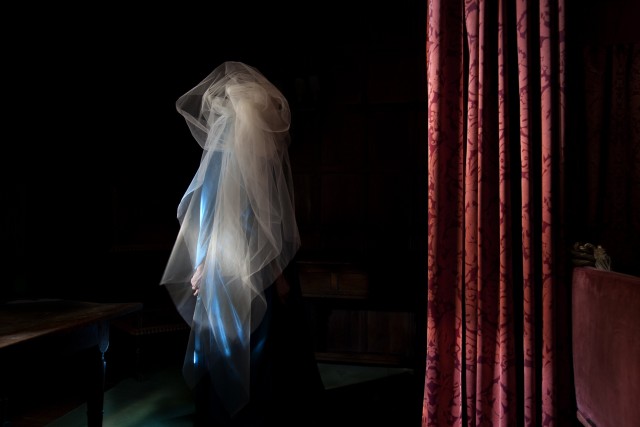Marcelle Joseph Projects proudly presents Present and Absent, a solo exhibition featuring a new series of photographs by Turkish artist Güler Ates taken in the historic rooms of Great Fosters, a former royal hunting lodge in Surrey dating back to 1550.
The title of the show references the former residents of Great Fosters over its more than four centuries of history, from Henry VIII in the 16th century and Judge Doderidge, Solicitor General to King James I, in the 17th century to Sir Charles Orby in the 18th century and Baroness Halkett, Queen Alexandra’s lady in waiting, in the early 20th century. While working in Great Fosters, Ates imagined these characters that once lived in the house. Ates says, ‘They were absent; however, through the objects in the rooms, the interiors and the exterior of the building, I wanted to trace the “present” of some of the previous occupiers.’ This new body of work confronts the intense dialogue between the past and present in this grand historic house.
Güler’s photographs were taken in the majestic settings of the Italian Room, Panel II Room and the Tapestry Room at Great Fosters, complete with 17th century Flemish tapestries and a carved wooden Jacobean chimneypiece. The Italian Room is finished with carved Quattrocentro doors and damask covered walls.
The darkness in the rooms, a consequence of the Tudor architecture, plays a significant role in the work of Ates, whose ambiguously veiled female figures illuminate against the dramatic backdrop of rich, heavy drapery. The extreme contrast is one element employed by the artist in order to create the fluid, floating apparitions that have become synonymous with Ates’ work. Ates herself is inspired by Dutch Old Master paintings and the darkness and intensity of the works on display are reminiscent of these masters of painting. Her body of work comments on the Western notion of Orientalism and the effects of the cross pollination of cultures on female identity and architecture. Güler says, ‘Manifestations of my work are realised through performance and site-responsive activities that merge Eastern and Western sensibilities.’ Ates questions the relationship between the veil and the West, and by setting the female veiled figure within a lush European interior, she subtly refers to the West’s mistaken ‘far-right’ interpretation of the veiled woman and refers back to the European traditions of veiled women as found in the work of Old Masters such as Vermeer. Important to
her artistic process, Ates sources the fabric and makes all of the luscious silk costumes worn by the model she photographs in her work after scrupulous research into the history of the building and the time when it was built.

